Course Main course | ||
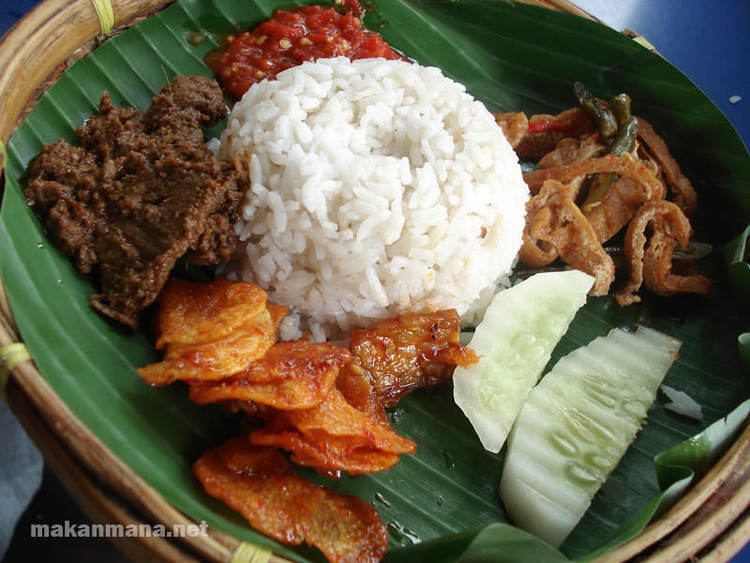 | ||
Serving temperature Hot or room temperature Main ingredients Rice in small portion with various side dishes wrapped inside banaan leaf Similar | ||
Nasi kucing ([ˈnasi ˈkutʃɪŋ]; also known as sego kucing and often translated cat rice or cat's rice) is an Indonesian rice dish that originated from Yogyakarta, Semarang, and Surakarta but has since spread. It consists of a small portion of rice with toppings, usually sambal, dried fish, and tempeh, wrapped in banana leaves.
Contents
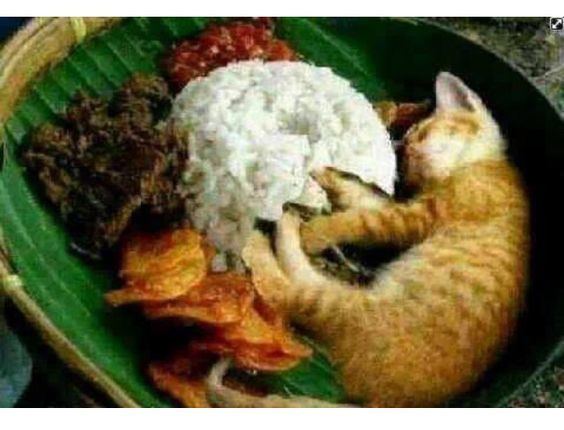
Junko lil zi ecko show nasi kucing kha mal
Etymology
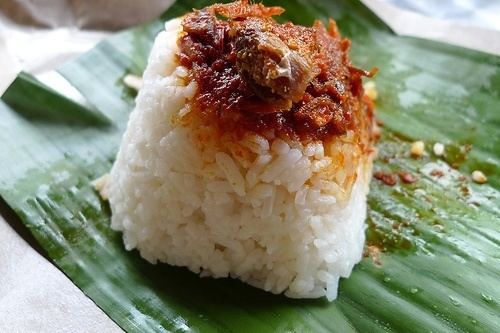
The term nasi kucing, literally meaning "cat rice" or "cat's rice", is derived from the portion size. The portion of rice served is similar in size to what the Javanese would serve to a pet cat, hence the name.
Origin
Nasi kucing originated in Yogyakarta, Semarang, and Surakarta. However, it has since spread to Jakarta and even as far as Mecca, sold by Indonesian workers during the hajj.
Presentation
Nasi kucing consists of a small, fist-sized portion of rice along with toppings. Common toppings include sambal, dried fish, and tempeh. Other ingredients can include egg, chicken, and cucumber. It is served ready-made, wrapped in a banana leaf, which is further wrapped in paper.
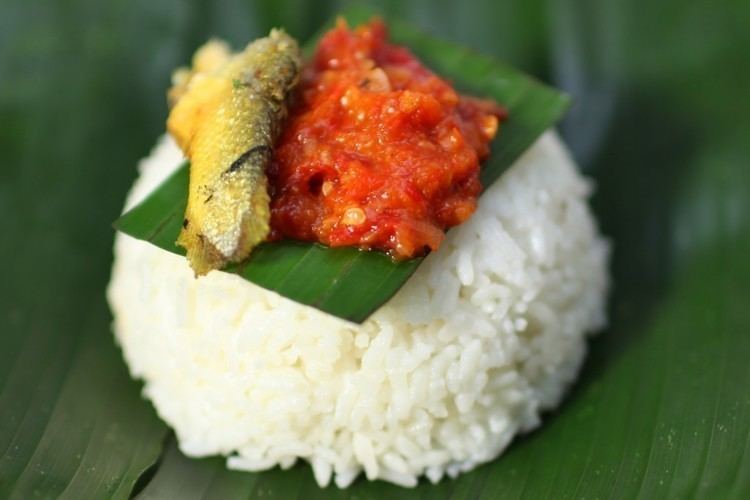
A variation of nasi kucing, sego macan (English: tiger's rice) is three times the size of a regular portion of nasi kucing. It is served with roasted rice, dried fish, and vegetables. Like nasi kucing, sego macan is served wrapped in a banana leaf and paper.
Sales
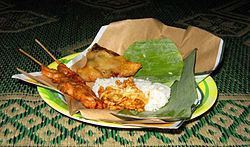
Nasi kucing is often sold at a low price (sometimes as low as Rp 1000 [US$0.12] for nasi kucing and Rp 4000 [US$0.48] for sego macan) at small, road-side food stalls called angkringan, which are frequented by lower-class people, or wong cilik, including pedicab and taxi drivers, students, and street musicians. This has led to angkringan being considered the "lowest class of eatery".
The owners of the angkringan themselves often come from lower socio-economic classes, may have few or no marketable skills, or originate from remote villages. In order to open their stalls, they borrow money from a patron, called a juragan; that amount can be up to Rp. 900,000.00 (US$105.00). From the daily net profits of Rp. 15,000.00 – Rp. 20,000.00 (US$1.75 – 2.35), the seller repays the patron until the debt is repaid and the seller is able to operate independently.
